I’m officially on the night watch, at least for now. I wake up in time for dinner and have breakfast right before going to bed- oh boy, what will I do when I get home?? I was awake as we transitioned from April to May…happy spring!
We’re now in the home stretch of the cruise- less than two weeks till we’re all done. It’s hard to believe that it’s almost over and sometimes hard to believe that we’ve spent so much time on this ship, out in the middle of the Bering Sea. It’s been quite an experience.
We’re off our planned cruise track right now, for a couple of reasons. 1. We were (or are) supposed to meet up with the Miller-Freeman, another research ship in the Bering Sea, who is currently a little off schedule, so we’re buying some time so we might catch up with them. It’s always good to check in with other scientists in the same region, see what they’re learning and seeing, especially since they’ll have gone through the same area as us later in the month of April. 2. We reached the ice edge and found a very large phytoplankton (microscopic plants) bloom. Everyone got very excited, because that’s what a lot of us are studying on the ship right now- what’s going on with the phytoplankton, what does the water look like (in terms of nutrients, oxygen, metals, dissolved gases) when there is a big bloom. PhytoplanktonSmall or microscopic aquatic plants that float or drift in fresh or salt water. are really important in an ecosystem- they are "primary producers,” meaning that they make their own food through photosynthesis, and they are also a major food source for many animals in an ecosystem. ZooplanktonSmall or microscopic aquatic animals that float or drift in fresh or salt water. "graze” on them (think about a cow out in a pasture) and then the zooplankton are eaten by bigger things (anything from small fish to blue whales!). What isn’t eaten by the zooplankton falls to the bottom of the ocean and is eaten by the benthic organisms (bottom dwelling organisms). When there is a large phytoplankton bloom, the zooplankton can’t always keep up, and a lot of phytoplankton fall to the bottom to get eaten by benthic organisms. So studying a phytoplankton bloom applies to all the scientists on board the Healy, whether they are interested in the benthic organisms (like we are) or in the water, or even the phytoplankton themselves.
The ship cruised around a bit in the same area, looking for the most productive area (where most of the phytoplankton are right now). When we found it, everyone sampled like crazy to find out as much information about this particular water column as they could. The zooplankton group did a net tow, and their nets were full of diatoms (phytoplankton) ! What they collected looked like chocolate syrup there was so many diatoms!
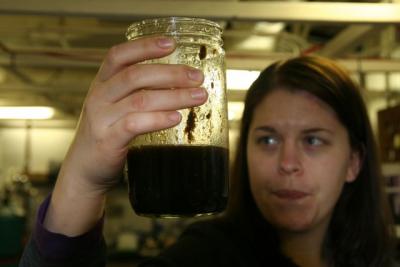
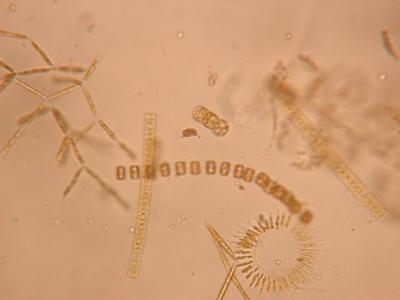
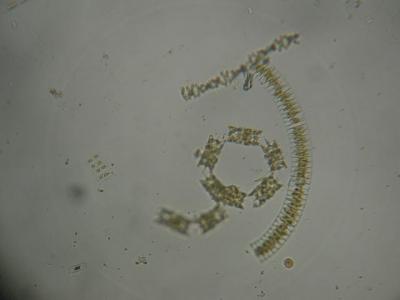
To top off the excitement of the day, we got a beautiful sunset at the end of it- this was around 11 or 11:30, though it probably didn’t get dark for another 30 minutes or so. Our days are getting longer and longer up here!!
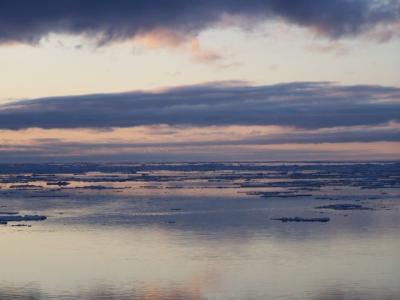
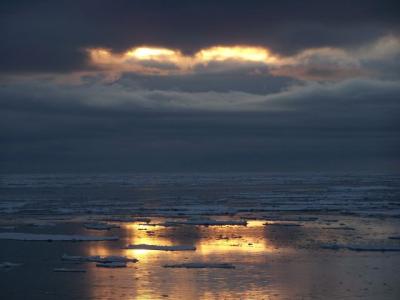


Comments